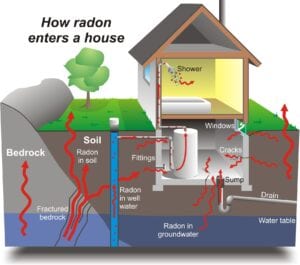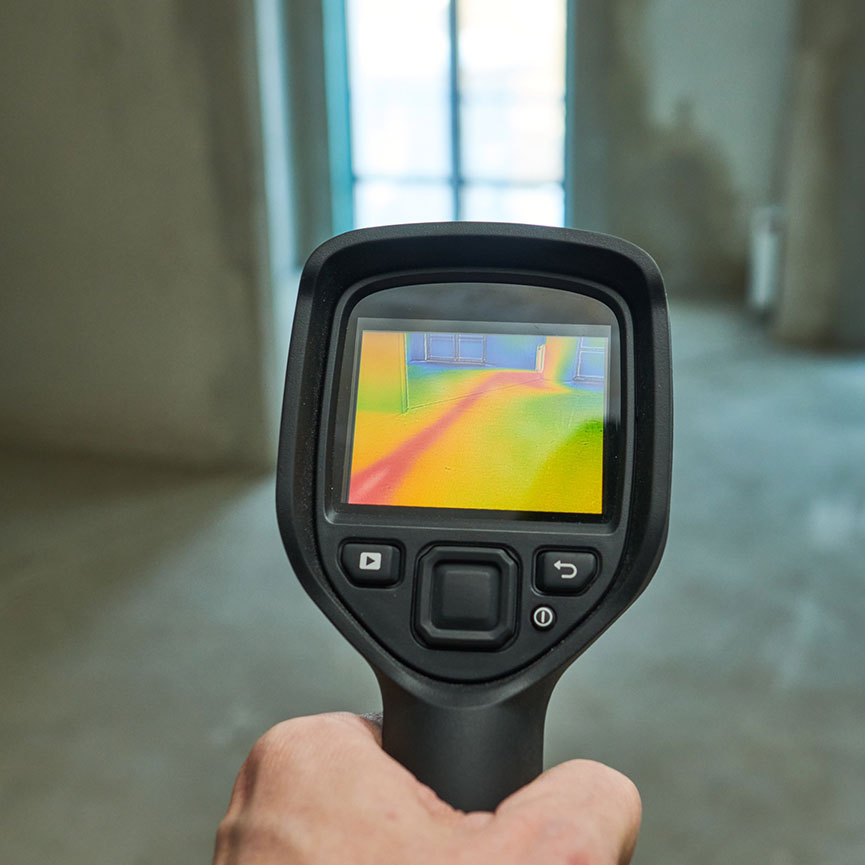
Why You Should Get A Radon Inspection In Your Home
Thought you were ready to buy or sell a home after it passed the home inspection? Hold your horses: there’s another inspection you need to perform on your home that is even more important to your safety, as well as the safety of its future residents. When you’re buying or selling a home, you already know that you need to get it inspected for structural and cosmetic problems. What you may not know is that you also need to get your home inspected for radon. In this article, we’ll explain what radon is; its side effects; what a radon inspection is and who should get one; what to do if your home contains radon; and how to find a certified radon inspector who will perform the inspection safely and get the most accurate results.
What Is Radon?
Radon is a radioactive gas. It comes from the natural breakdown of uranium in the earth, and it can come up from the foundation of your house or a water well on your property. Once it comes up from the ground into your home, it can start causing some serious problems.
What Are The Side Effects Of Radon?
Because radon is radioactive, when you breathe in high amounts of it over a long period of time you may start experiencing lung problems such as difficulty breathing. In the extreme, prolonged exposure to radon can cause your body to develop lung cancer. Even though it typically takes years to reach that point, this substance is still not something you want you, your family, or your pets to be breathing in on a daily basis. That’s why it’s crucial for the health of your family and future residents of your home to get a radon inspection done.
What Is A Radon Test?
A radon test is performed by a state-certified radon inspector. This person will come into your home and measure the level of radon present in the air. They will pay special attention to the lowest floor of the house because the lowest floor is closest to the foundation. Since radon gas typically originates in soil or rock, it tends to seep into your house through cracks in the foundation.
If you have a private water well on your property, the radon inspector may test it, as well. Radon can contaminate your water, making it unsafe to drink or expose to your body. A radon inspector may test your home using a short-term or a long-term test. The short-term test gets you results in 2-90 days, whereas the long-term one is run for longer than 90 days. The purpose of testing for radon longer than 90 days is to get an accurate picture of what the average radon levels are in your house year-round. According to the EPA, radon levels change depending on the time of year and the season. However, if you’re selling or buying a home, you will probably want to request a short-term test to determine if there are any immediate problems. Radon levels are considered too high if they reach 4 pCi/L. At that point, or at any level above 4 pCi/L, your house must be renovated using specific methods in order to reduce the radon present in the air.
Who Should Get A Radon Test?
Anyone buying or selling a home who hasn’t had a certified inspector perform a radon test on their house within the last two years should request one immediately. This step will give both the seller and the buyer peace of mind. People who are not putting their house on the market or looking to buy, but have difficulty breathing while they’re indoors might also consider having a radon test done and the results evaluated. Radon is a serious issue, and it’s better to be safe than sorry. A certified inspector can expose your house’s radon problem before it begins to affect your health.
What Should I Do If My Home Contains Unsafe Levels Of Radon?
If the certified radon inspector finds through the results of their testing that your home contains radon levels of 4pCi/L or over, your next step should be to find ways to lower the radon levels. The best and safest way to do that is to hire a radon mitigation contractor. A radon-mitigation contractor can evaluate the test results provided by the radon inspector. They can then recommend mitigation to lower the levels of the radioactive gas in your house back down to a safe, habitable level. Some of the mitigations you can do to lower radon levels include installing a system of vent pipes and fans. These systems prevent radon from entering your home. Other mitigation techniques include sealing openings in your foundation. If the inspector determines that the source of the radon is in your water supply, you or the radon-reduction contractor can install specialized filters that will help keep your water clean and free from radioactive substances.
Where Can I Find A Certified Radon Inspector?
Before you can start fixing your house’s radon problem, you need to discover the extent of it. You need a certified radon inspector. That’s where we come in. At Catalyst Inspections, we are certified to perform radon inspections on your Colorado home through InterNachi. We can provide accurate results that will help you on your journey to making your home’s radon level safe. Schedule an inspection today and gain peace of mind. We serve Northern Colorado to include: Windsor, Loveland, Fort Collins, Greeley, and more.
Source: EPA
